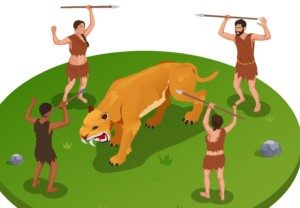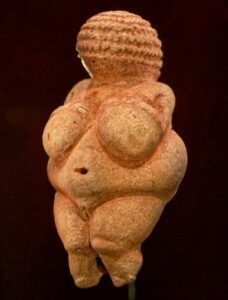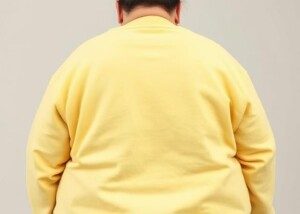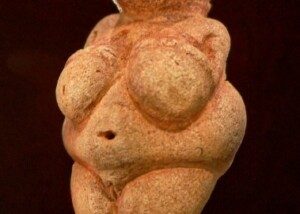
In recent years morbidly obese women have taken to social media promoting that extreme levels of body fat fall under the umbrella of “natural body diversity.”
They say that even super morbid obesity should be viewed as just another expression of human variation.
But at what point does the concept of “normal body diversity” stop being reaffirming for women who have followed this trend — and start denying health dangers, societal health burdens and biological reality?
Advocates for size inclusivity typically believe that body diversity means embracing a wide range of body weights.
Ironically, that range tends to begin at maybe a size 10 to anything bigger, rather than including thinner sizes in the opposite direction.
This phenomenon is evident when we see posts on Instagram or TikTok speaking of “all bodies are good bodies” or “bodies naturally come in all sizes,” – but then the image or video shows ONLY overweight women.
It’s essential not to normalize a health compromising condition that’s almost always driven by lifestyle choices.
Morbid obesity — a BMI over 40 or being 100+ pounds overweight — comes with a significantly higher risk of chronic diseases.
If morbid obesity were a natural variation within the human species, we would expect to see it occur at relatively consistent rates across populations worldwide.
However, we find it overwhelmingly concentrated in societies where calorie dense foods are plentiful and physical activity is minimal.
- This points to environment and behavior, not natural diversity, as the primary drivers.
The Evolution of the Human Body

Freepik/macrovector
From an evolutionary standpoint, extreme obesity does not align with how human physiology was designed to function.
Our primitive ancestors evolved to store energy as fat in times of food shortage.
This genetic hardwiring does not extend to naturally carrying a lot of excess weight year-round in a modern-day environment of constant abundance.
In fact, maintaining excessive fat would have hindered survival by impairing mobility, reproductive success and the ability to hunt or escape danger, plus migrate for many miles in a day.
Wild Animals
Consider wildlife: You rarely see obese animals in nature unless they’re preparing for hibernation.
Also, some aquatic creatures rely on blubber for insulation such as seals and whales.
Some species of shark may appear “fat,” but appearance in these apex predators can be deceiving.
Predators, prey and even small animals like skunks, birds, mice and snakes are never overweight in their natural habitat because excess weight reduces their survival chances.
This phenomenon just as much applies to humans in a hunter-gatherer setting, whether modern-day or during ancient times.
Nobody knows just how non-prevalent obesity was during caveman times. Reread that.
But morbidly obese female influencers love to point out the famous Venus of Willendorf stone carving, which carbon dates back to about 25,000 years, as evidence that fat bodies have always been around.

Venus of Willendorf. In real life, a woman this size wouldn’t have such skinny arms. Look closely; her pipe-cleaner arms are against her sides, resting on her breasts. So are we to believe there actually once existed bodies like this — morbidly obese middle and legs but stick thin arms — just because someone made this statue?
Nobody knows why this statue was created to look like a modern-day morbidly obese body (save for its stick thin arms).
No written records come with this 25,000-year-old sculpture.
For all we know, this faceless female body was carved by an adolescent artist, made fat for creative experimentation.
I began drawing the human body at around age five or six, and I’d be lying if I said I never – in an extra imaginative moment – created bizarre physical features just for the fun of it.
It’s possible the Venus, during its time of creation, was never seen by more than a handful of people.
To claim that it’s proof that morbid obesity has always been a part of natural variation in female bodies is … well, quite delusional.
If fatness is a normal variation of the human species, why don’t we also see it in wild animals such as rabbits, squirrels, wolverines, panthers, pumas and jackals?
Sure, sometimes we’ll see a “fat” rabbit in our yard munching on vegetation.
But rabbits have thick coats of fur that create the illusion they’re obese.
Step outside into your yard and approach that rabbit, and it will bolt like The Flash in a way that an actually morbidly obese rabbit could never do.
- Nature doesn’t support unnecessary fat accumulation.
- It favors efficiency and adaptability.
As for hippos, rhinos and cows — their large bodies are mostly muscle.
Rather than redefining severe obesity as a natural body type, we should recognize it as a modern mismatch — our biology colliding with an environment full of processed foods and limited physical activity
Being significantly overweight isn’t a normal variation of human genetics; it’s a response to an unnatural lifestyle.
 Lorra Garrick is a former personal trainer certified by the American Council on Exercise. At Bally Total Fitness, where she was also a group fitness instructor, she trained clients of all ages and abilities for fat loss and maintaining it, muscle and strength building, fitness, and improved cardiovascular and overall health.
Lorra Garrick is a former personal trainer certified by the American Council on Exercise. At Bally Total Fitness, where she was also a group fitness instructor, she trained clients of all ages and abilities for fat loss and maintaining it, muscle and strength building, fitness, and improved cardiovascular and overall health.
.









































